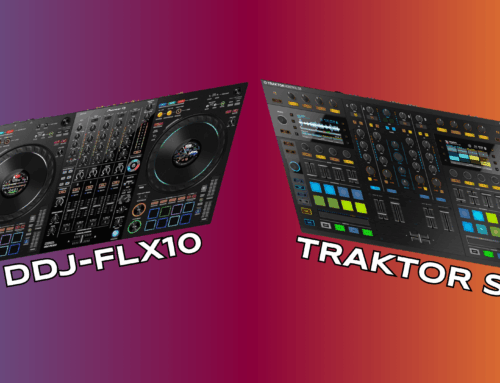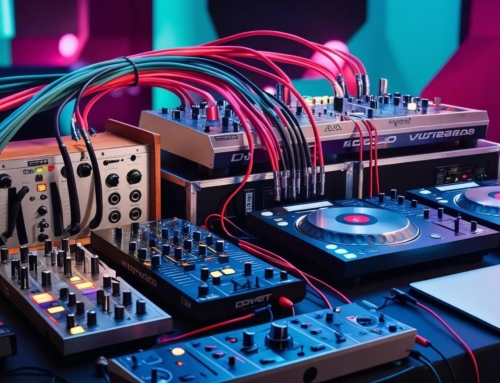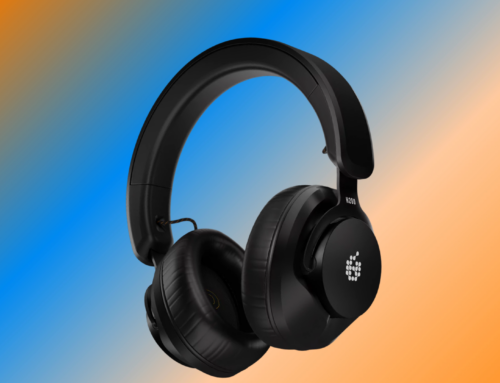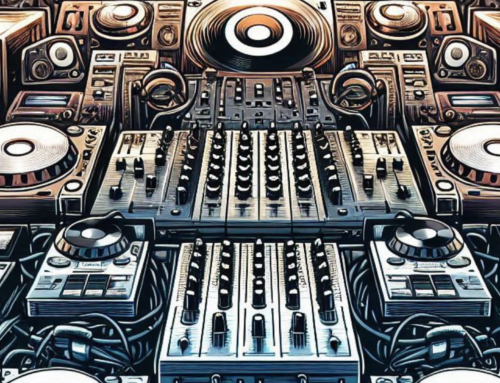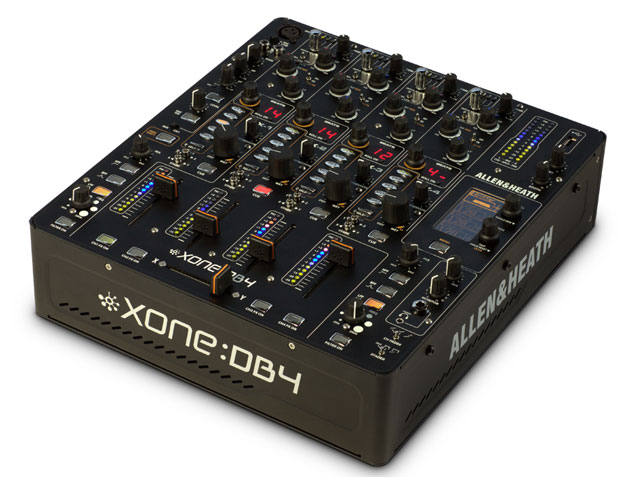 After previously reviewing the Allen & Heath Xone:DB2, I wondered how much different its more robust cousin, the Xone:DB4, might be. The two look similar, and the DB2 was already one of the more thrilling units I’ve encountered in a while, so I wondered just how much better the DB4 could get. To my surprise, the Xone:DB4 is considerably more advanced than the DB2, and is probably one of the greatest dedicated mixers I’ve ever had the honor to mix with.
After previously reviewing the Allen & Heath Xone:DB2, I wondered how much different its more robust cousin, the Xone:DB4, might be. The two look similar, and the DB2 was already one of the more thrilling units I’ve encountered in a while, so I wondered just how much better the DB4 could get. To my surprise, the Xone:DB4 is considerably more advanced than the DB2, and is probably one of the greatest dedicated mixers I’ve ever had the honor to mix with.
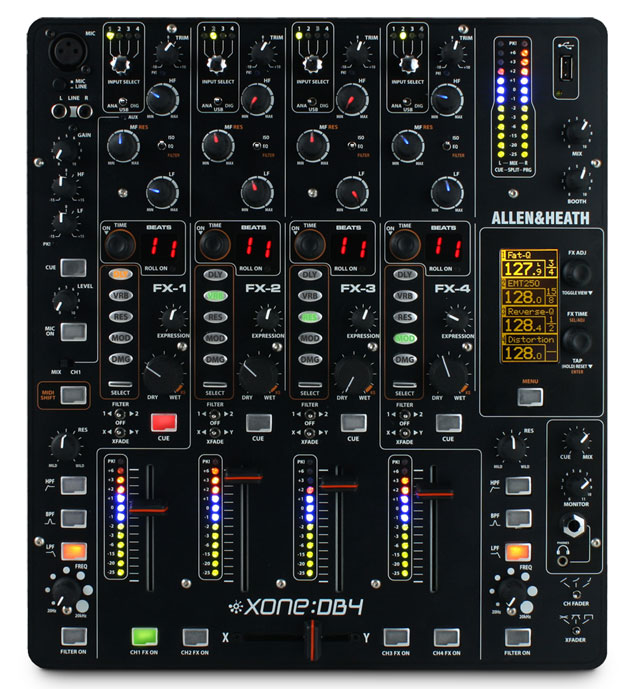
As always, Allen & Heath has provided excellent build quality and impeccable style in the Xone:DB4. The look and feel of the knobs and casing suggest expert craftsmanship with a touch of a DIY electronics aesthetic, combining for a wholly satisfying user experience. The DB4 uses top-notch faders and rotaries, just grippy enough to ensure you don’t slip without feeling sticky. The color scheme, particularly that of the plentiful LEDs, is simply breathtaking, especially in a dark club setting. The DB4 also has an entirely intuitive layout, and doesn’t require any effort to understand exactly how the audio is being routed. The fact that each channel has its own effects unit certainly helps with this, but more on that later. Having two variable-state filters is also quite handy, and gives this mixer its classic Allen & Heath sound. Putting each filter on one side of the mixer is a great touch, preventing assignments from being confused. I only wish that the filter knobs were a little bit bigger. As important as the filters are, they deserve to have knobs at least as big as the dry/wet knobs on the effects units.
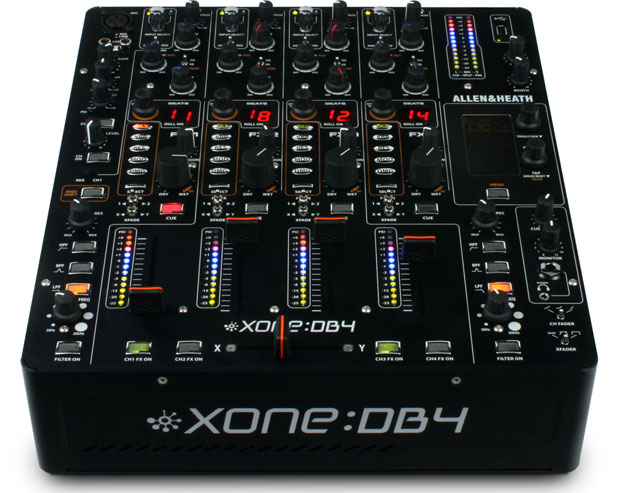
Of all the adjectives to describe the Allen & Heath Xone:DB4, featureless is not one of them. The DB4 has so many audio routing and manipulation options built into its sturdy frame that it almost seems like a whole suite of DJ equipment has been laboriously packed into one box. As I mentioned before, maybe the most exciting feature of this mixer is the four dedicated effects units, providing delay, reverb, resonators, modulators, and damage effect capabilities to each of the unit’s four channels. Within each of these five categories is a plethora of further options, allowing for infinite combinations of effects that will never become boring. Another feature which further enhances the DB4’s sonic capabilities is the input matrix, allowing for the selection of any one of twelve audio channels on each of the system’s audio lanes. This permits exceptional creative control; for example, two effects can be applied to one audio stream by simply loading the audio into two separate channels! Faders then control the relative amount of each effect. The Xone:DB4 also includes MIDI capability for use with Traktor and other MIDI-enabled DJ software, but honestly just using the mixer itself far outshines anything you could hope to do on your computer.
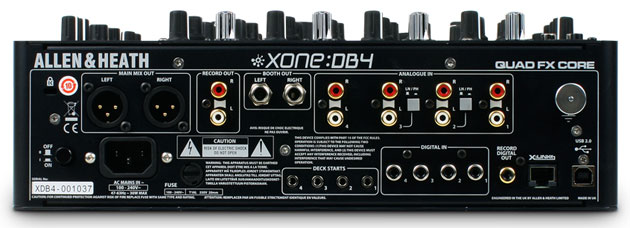
Though perhaps this is reflected in the unit’s price, the Allen & Heath Xone:DB4 is probably the best DJ mixer available today, in terms of audio and effect quality, user interface, build quality, and style. Pulling this beauty out of your DJ case guarantees you to be the envy of your local club scene.
Features:
Quad FX Core
The heart of the Xone:DB4 is the powerful Quad FX Core DSP engine, enabling each channel to have its own FX bank and BPM detection system, which automatically adjusts all time-related FX and loops to the tempo of the music. There are 5 studio quality FX types optimised for DJ use – delays, reverbs, modulators, resonators and damage – plus each FX type has a patch library of different effect variations. Each FX bank has a dedicated expression control and a rotary pot to set the wet/dry level, whilst further tweaking can be performed using the global controllers in the FX master section.
X:LINK
X:LINK uses a standard RJ45 connector and distributes power and data allowing connection to X:LINK compatible devices, saving USB ports on your computer.
Looper
Each channel has a built-in looper, with selectable loop length from 1/16 beat to 4 bars. DB4 will always record the full 4 bars, so the loop can be expanded or shrunk at will.
Filters
DB4 comes equipped with the Xone dual filter system.
Source select
Each music channel can select any of the available stereo music sources: Analogue Line 1-4 (switchable to Phono on 2-3), Digital 1-4 or USB 1-4.
EQ / Filter
Each music channel has a 3-band EQ that can be configured as standard asymmetric EQ (+6/-26dB), Isolator (+6dB/OFF with a 24dB/octave slope), or reconfigured as a High-Pass/Low-Pass filter system with adjustable resonance. EQ knob pointers change colour to show which type of equalization is active.
Mic/Line Input
The Mic/Line input has 2-band EQ, gain, cue and mix level. This can also be routed to channel 1 for adding FX.
Integral Soundcard
A built-in, high quality (24-bit / 96kHz), multi-channel, fully patchable USB2 soundcard allows replay and recording from audio software for 4 stereo sends and 4 stereo returns.
USB
User-defined settings such as meter mode, BPM range, USB audio routing scheme and display brightness can be saved to a USB key for recall on another DB4.
MIDI control
All controls (except Mic and Phones level) send MIDI data and the mixer can double up as a MIDI controller via the MIDI shift button, allowing the Loop and FX selection controls to send MIDI data without changing the mixer settings.
Output Patchbay
Booth, record and phones – source selectable and level trim. Booth and main – phase and level trim controls.
High Visibility Display
The OLED display is clearly visible, even in bright sunlight, and displays channel FX selection and current BPM, as well as being an easy interface for the Menu setup functions.
Lightweight chassis
DB4’s lightweight aluminium chassis is designed to make touring with the console easy.
